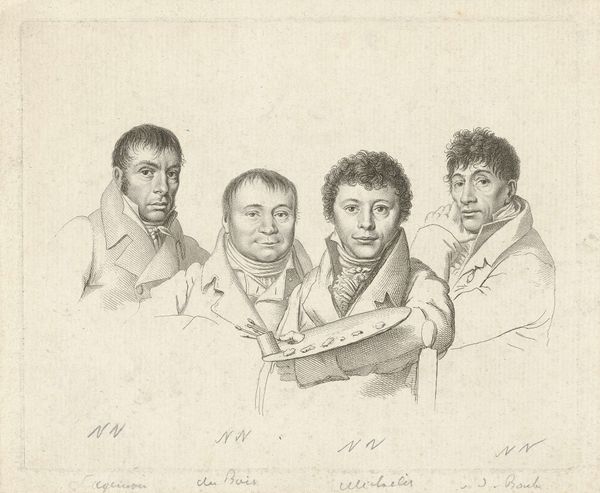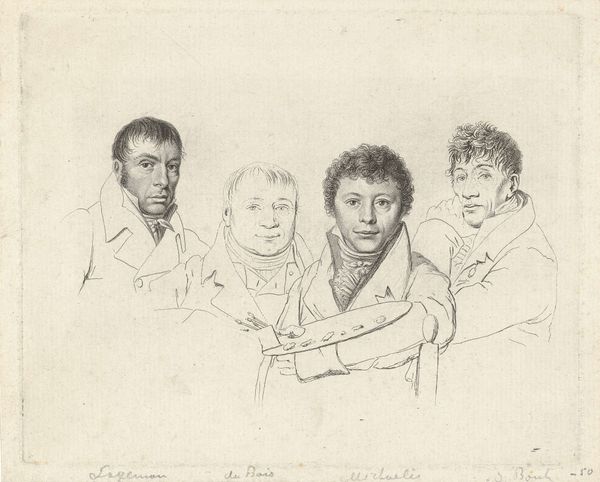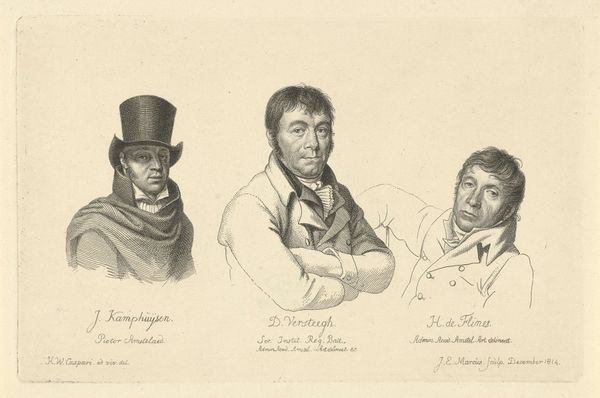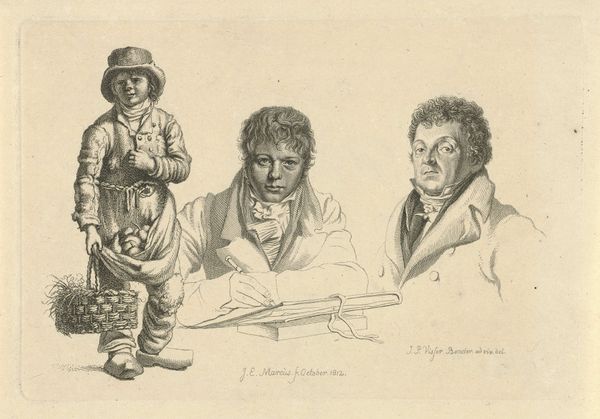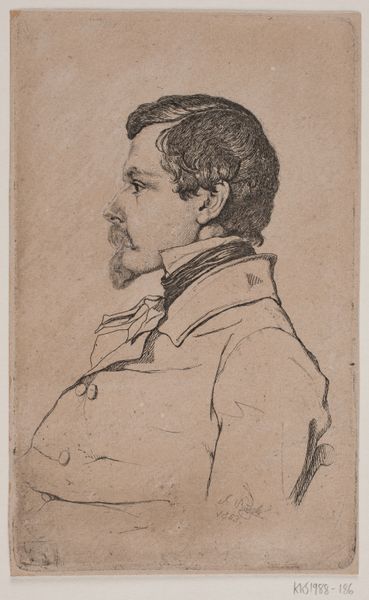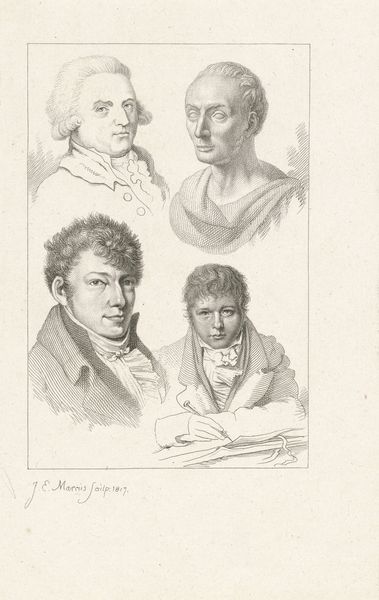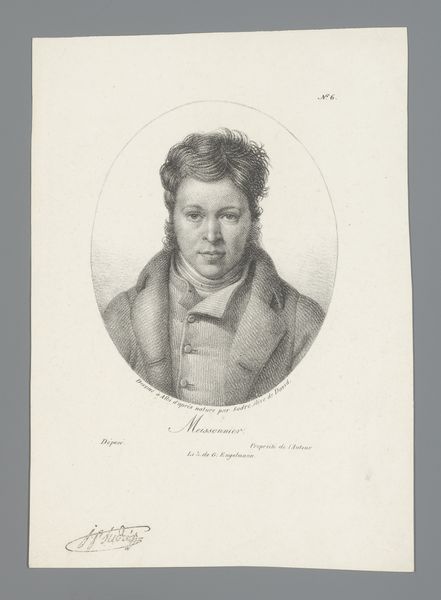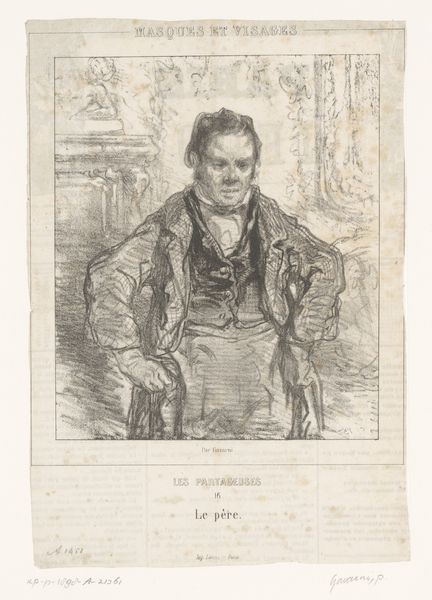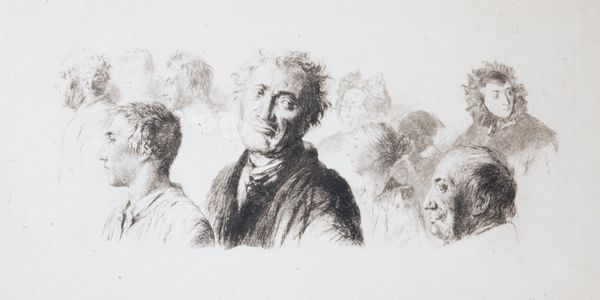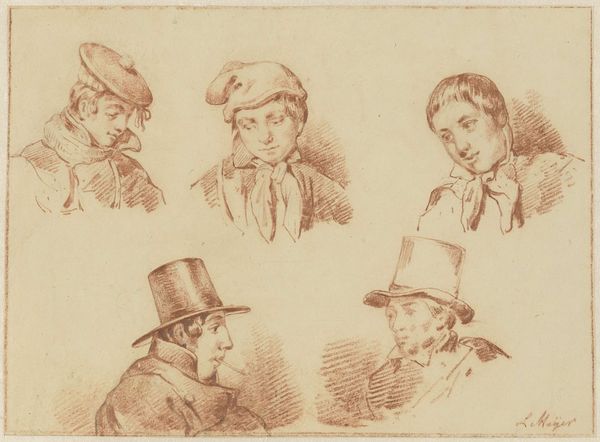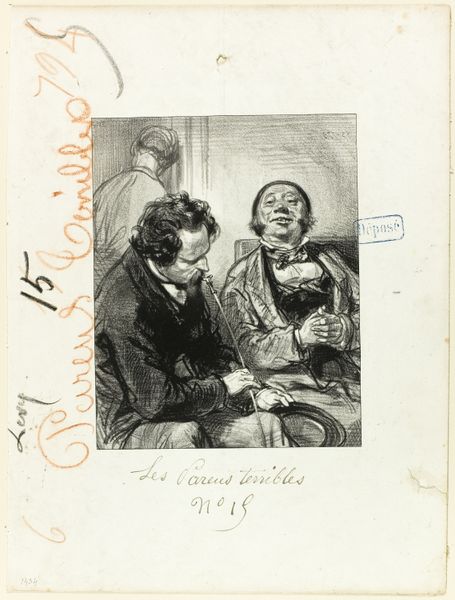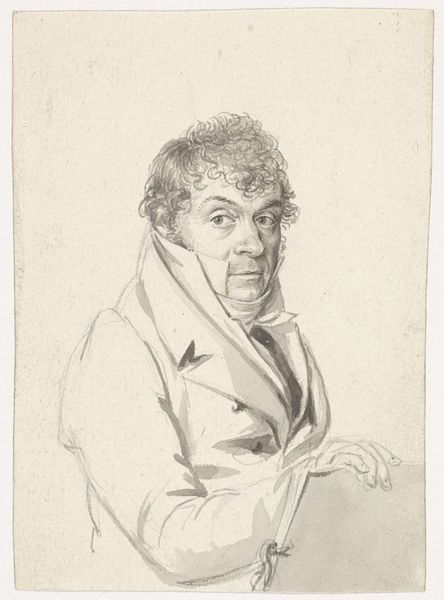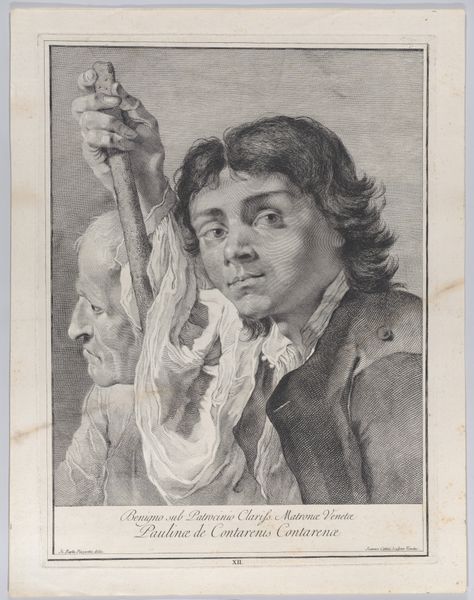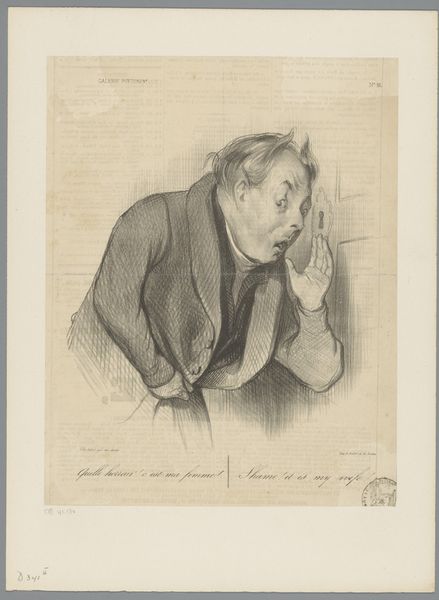
drawing, print, pencil
#
portrait
#
pencil drawn
#
drawing
#
self-portrait
# print
#
pencil sketch
#
pencil drawing
#
romanticism
#
pencil
#
portrait drawing
Dimensions: image: 18.7 x 20 cm (7 3/8 x 7 7/8 in.) sheet: 21.9 x 23.4 cm (8 5/8 x 9 3/16 in.)
Copyright: National Gallery of Art: CC0 1.0
Curator: Here we have Jacques Antoine Marie Lemoine’s "Self-Portrait and Other Heads," created in 1819 using pencil. What strikes you initially about this print? Editor: The density of the portraits, almost crammed onto the page, gives me a sense of unease, a feeling of being watched or observed, even overwhelmed. Curator: Indeed, Lemoine utilizes distinct compositional strategies. On the right, the artist presents a large self-portrait dominating the space, balanced by a collage-like assortment of smaller portraits to the left. Notice the intricate linework. The textures created are quite diverse; they oscillate between finely rendered faces and the rougher foliage backdrop. Editor: Absolutely, and these contrasting textures and clustered figures speak to the social dynamics of the time, I think. The work feels like a comment on the performance of selfhood, considering how one crafts an identity within various social circles represented in the group portraits, no? Especially considering France following the revolution, identity must have been something quite fraught to consider. Curator: One could see it that way. Or we might consider how Lemoine uses light and shadow to sculpt the form of his face. The eyeglasses create a focal point, almost dissecting his gaze, making the viewer hyper-aware of observation and perspective within the portrait itself. It shows great attention to formal relationships within the composition, independent of sociopolitical context. Editor: That may be so, yet I think that a social reading allows for deeper appreciation; Lemoine may be challenging ideas related to individual versus communal identity. Even the smaller heads vary wildly. We could take the inclusion of so many figures, and such a range of ages, classes and relationships as a direct commentary on social and political divisions of the day. Curator: Perhaps. But to solely concentrate on that sociopolitical read is to diminish Lemoine's manipulation of medium, the ways the graphic language contributes to the creation of something unique—something more than just social commentary. It's about the dialogue established between form and content that defines the piece's inherent value. Editor: Still, engaging the cultural background provides context, allowing modern audiences to fully appreciate both intent and method. It broadens rather than limits its meanings. Curator: An interesting duality, captured with delicate precision in graphite over two centuries ago, isn't it? Editor: Precisely. The social narratives as filtered through the artist's meticulous technique. It remains remarkably compelling on both levels.
Comments
No comments
Be the first to comment and join the conversation on the ultimate creative platform.
